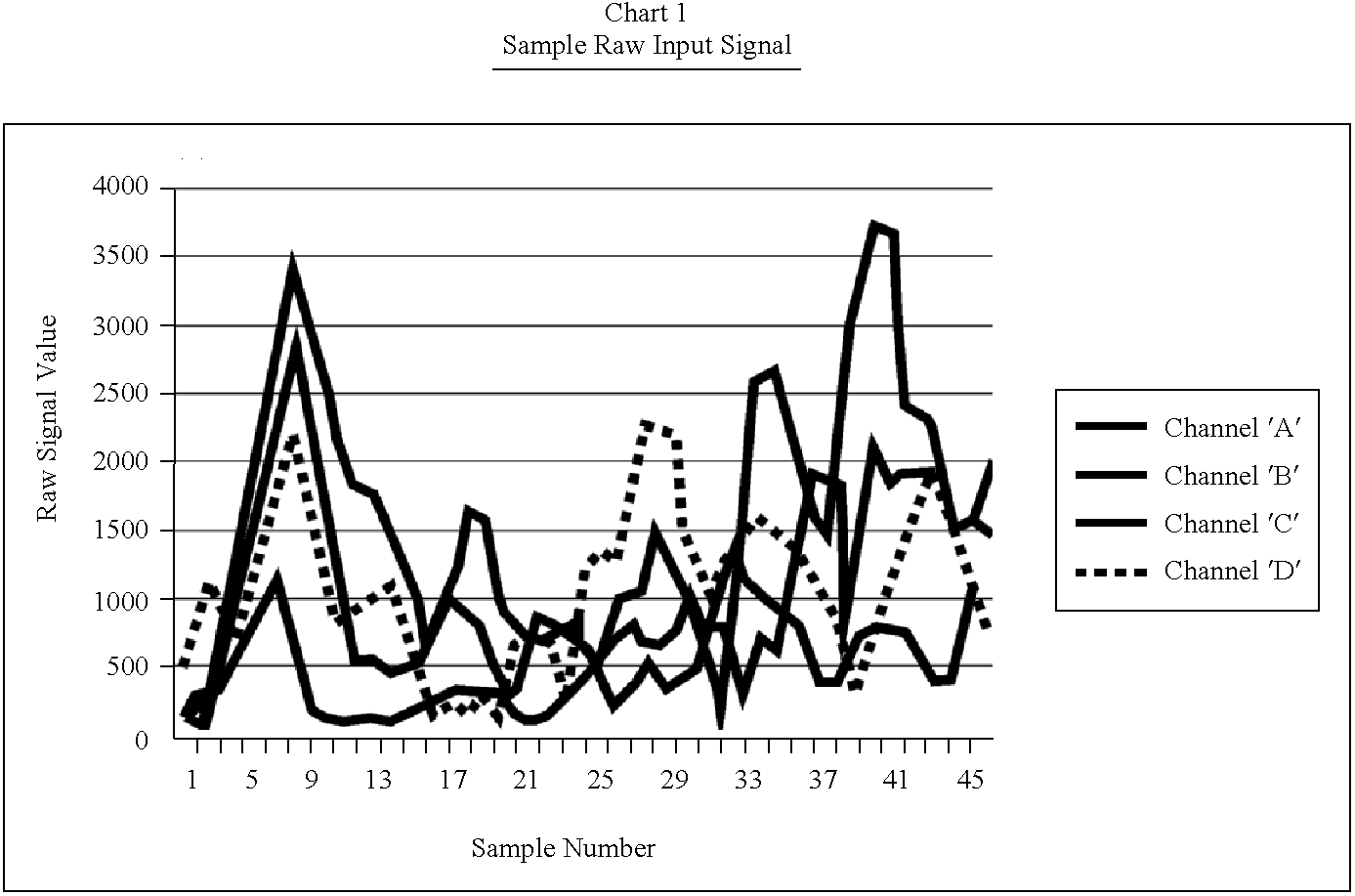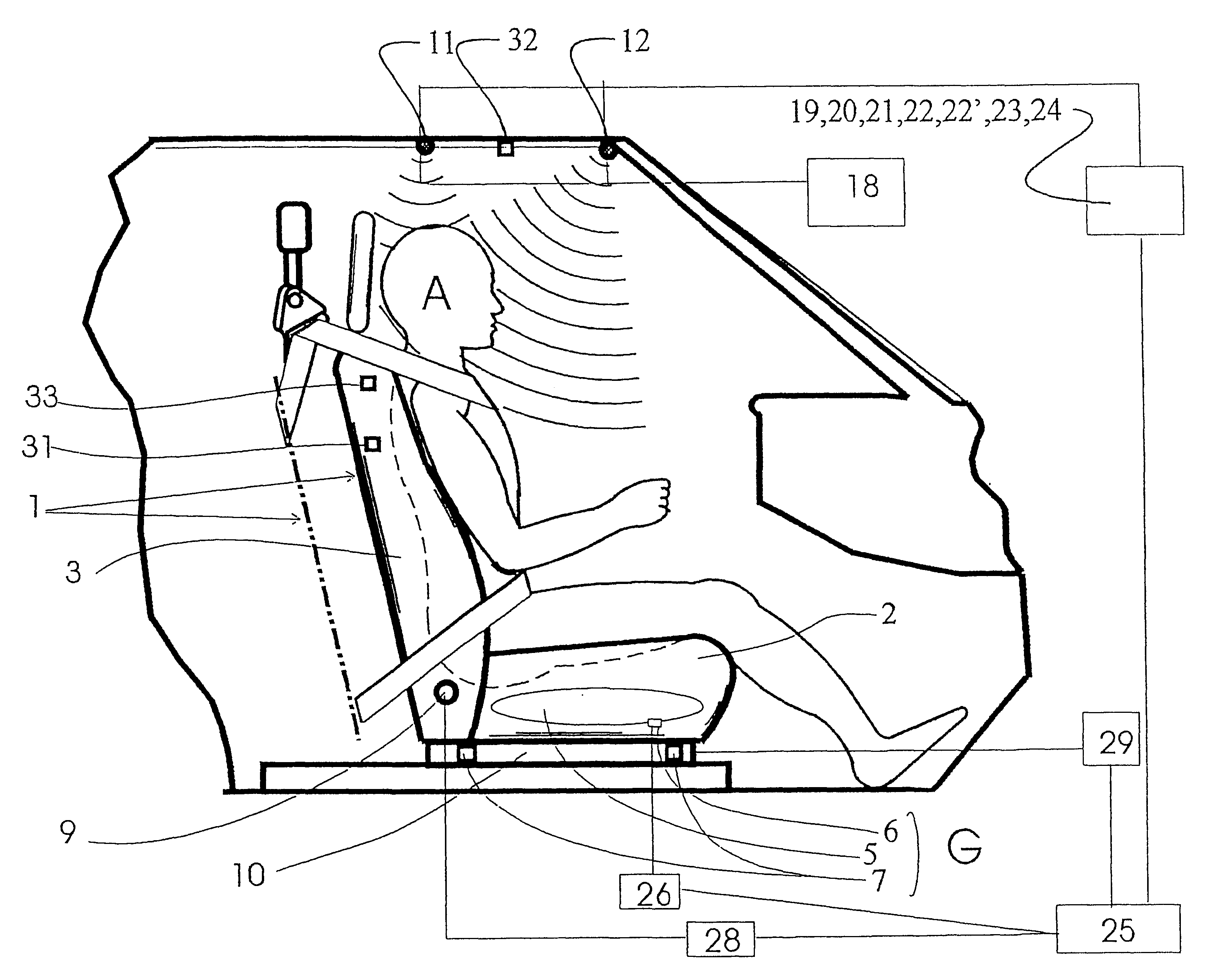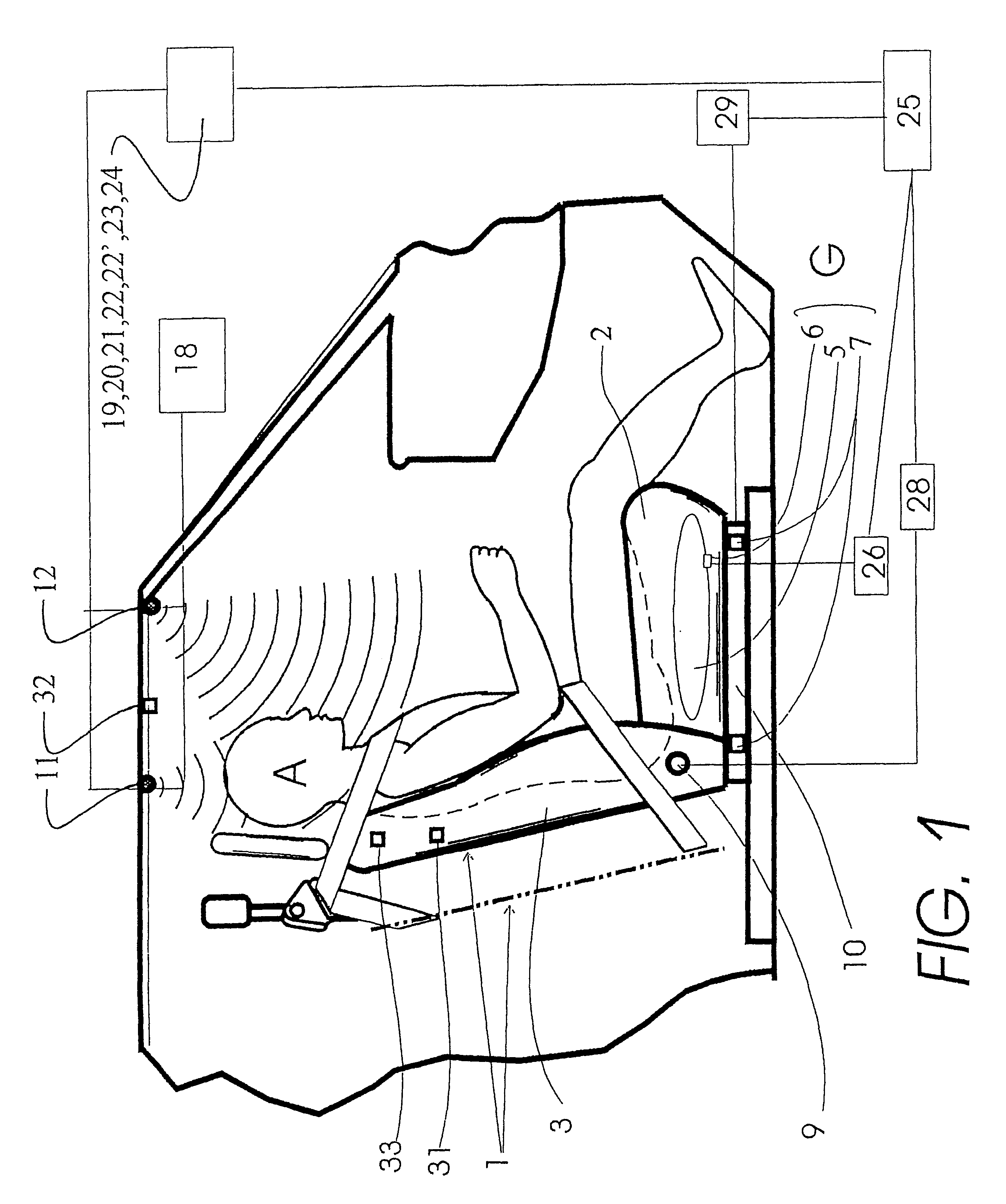Methods for controlling deployment of an occupant restraint in a vehicle and determining whether the occupant is a child seat
a technology for determining whether an occupant is a child seat and a vehicle, which is applied in the direction of pedestrian/occupant safety arrangement, using reradiation, instruments, etc., can solve the problems of serious injury or death of children in rear facing child seats placed on the right front passenger seats, vehicle occupants, and inability to detect children, etc., to achieve highly reliable occupant presence and position system, high reliability of object classification
- Summary
- Abstract
- Description
- Claims
- Application Information
AI Technical Summary
Benefits of technology
Problems solved by technology
Method used
Image
Examples
Embodiment Construction
. Introduction
The Artificial Neural Network that forms the "brains" of the Occupant Spatial Sensor needs to be trained to recognize airbag enable and disable patterns. The most important part of this training is the data that is collected in the vehicle, which provides the patterns corresponding to these respective configurations. Manipulation of this data (such as filtering) is appropriate if this enhances the information contained in the data. Important too, are the basic network architecture and training methods applied, as these two determine the learning and generalization capabilities of the neural network. The ultimate test for all methods and filters is their effect on the network performance against real world situations.
The Occupant Spatial Sensor (OSS) uses an artificial neural network (ANN) to recognize patterns that it has been trained to identify as either airbag enable or airbag disable conditions. The pattern is obtained from four ultrasonic transducers that cover th...
PUM
 Login to View More
Login to View More Abstract
Description
Claims
Application Information
 Login to View More
Login to View More - R&D
- Intellectual Property
- Life Sciences
- Materials
- Tech Scout
- Unparalleled Data Quality
- Higher Quality Content
- 60% Fewer Hallucinations
Browse by: Latest US Patents, China's latest patents, Technical Efficacy Thesaurus, Application Domain, Technology Topic, Popular Technical Reports.
© 2025 PatSnap. All rights reserved.Legal|Privacy policy|Modern Slavery Act Transparency Statement|Sitemap|About US| Contact US: help@patsnap.com



